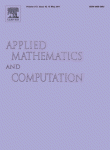 The journal Geology has retracted a paper that, when it was published in May 2010, was hailed as a major step forward in understanding what happened when the Indian and Asian land masses collided millions of years ago. As The Hindu reported when the paper was first published:
The journal Geology has retracted a paper that, when it was published in May 2010, was hailed as a major step forward in understanding what happened when the Indian and Asian land masses collided millions of years ago. As The Hindu reported when the paper was first published:
Dr. [Anju] Pandey and her colleagues used sophisticated analytical techniques to demonstrate the occurrence of relict majorite, a variety of mineral garnet, in rocks collected from the Himalayas. Majorite is stable only under ultra-high pressure conditions, meaning that it must have been formed very deep down in the Earth’s crust, before surfacing millions of years later.
“Our findings are significant because researchers have disagreed about the depth of subduction of the Indian plate beneath Asia,” said Dr. Pandey.
In fact, the previous depth estimates conflicted with estimates based on computer models. The new results suggest that the leading edge of the Indian plate sank to a depth around double that of previous estimates.
“Our results are backed up by computer modelling and will radically improve our understanding of the subduction of the Indian continental crust beneath the Himalayas,” said Pandey, according to an NOC release.
It turns out, however, that as best as anyone can tell, the key data are from Norway, not the Himalayas, and were published in 1998 by another group. According to the retraction notice, which appears in the May 2011 issue (link to 1998 paper added): Continue reading Geology retraction unearths a dead co-author and plagiarized image of “Himalayan” rock actually from Norway







